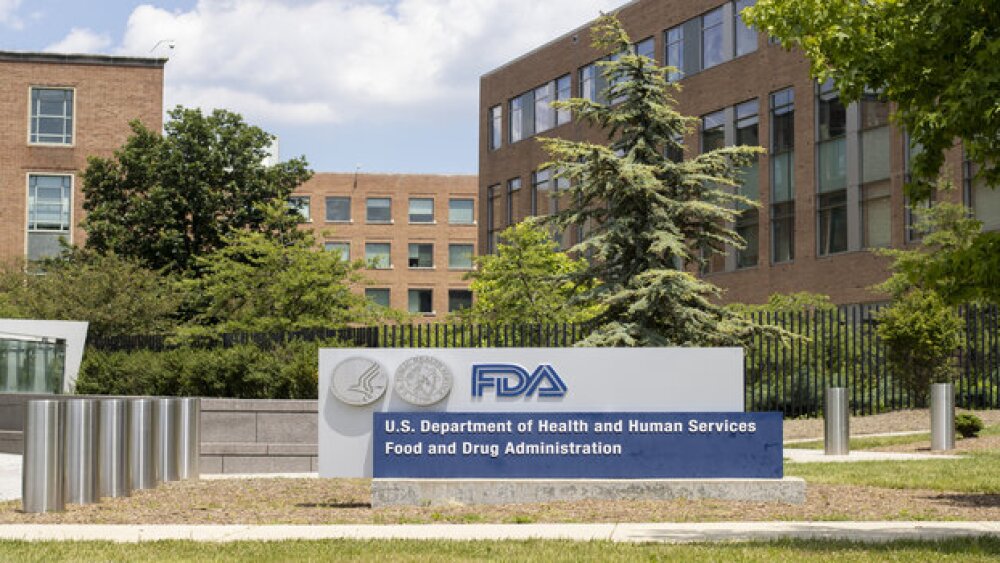The following is attributed to Acting FDA Commissioner Janet Woodcock, M.D., and Susan T. Mayne, Ph.D., director of the FDA’s Center for Food Safety and Applied Nutrition.
The following is attributed to Acting FDA Commissioner Janet Woodcock, M.D., and Susan T. Mayne, Ph.D., director of the FDA’s Center for Food Safety and Applied Nutrition.
SILVER SPRING, Md., April 8, 2021 /PRNewswire/ -- Protecting one of our most vulnerable populations, babies and young children, is among the U.S. Food and Drug Administration‘s highest priorities. Today, we’re announcing a new action plan, Closer to Zero, that sets forth our approach to reducing exposure to toxic elements in foods commonly eaten by babies and young children to the lowest possible levels. Although the FDA’s testing shows that children are not at an immediate health risk from exposure to toxic elements at the levels found in foods, we are starting the plan’s work immediately, with both short- and long-term goals for achieving continued improvements in reducing levels of toxic elements in these foods over time.
We recognize that Americans want zero toxic elements in the foods eaten by their babies and young children. In reality, because these elements occur in our air, water and soil, there are limits to how low these levels can be. The FDA’s goal, therefore, is to reduce the levels of arsenic, lead, cadmium and mercury in these foods to the greatest extent possible. We are also sensitive to the fact that requiring levels that are not currently feasible could result in significant reductions in the availability of nutritious, affordable foods that many families rely on for their children. Our plan, therefore, outlines a multi-phase, science-based, iterative approach to achieving our goal of getting levels of toxic elements in foods closer to zero over time.
Closer to Zero includes research and evaluation of changes in dietary exposures to toxic elements, setting action levels (recommended limits of toxic elements in foods that can be achieved by industry and progressively lowered as appropriate), encouraging adoption of best practices by industry, and monitoring progress.
Our action plan will occur in three phases. As part of the first phase, we’ll immediately begin our work setting action levels using a four-pronged approach:
| 1. | Evaluate the scientific basis for action levels. The cycle of continual improvement starts with the FDA evaluating existing data from routine testing of the food supply, research and data on chemical analytical methods, toxicological assays, exposure and risk assessments, and other relevant scientific information. Through a process that may include advisory committees, public workshops, and consultation with scientific experts, federal agency partners, and other stakeholders, the agency will establish interim reference levels (IRLs) for certain toxic elements as appropriate. An IRL is a measure of exposure from food that the FDA may use to determine if the amount of exposure to an individual element across foods could result in a specific health impact. |
| 2. | Propose action levels. The IRLs may be among the key factors that inform the development of the FDA’s proposed action levels for certain toxic elements in categories of baby foods (e.g., cereals, infant formula, pureed fruits and vegetables, etc.) and other foods commonly eaten by babies and young children. |
| 3. | Consult with stakeholders on proposed action levels, including the achievability and feasibility of action levels. For each toxic element—for every identified category of food—the FDA will gather data and other information through a process of consultation that could include workshops, scientific meetings, and collaboration with federal partners to assess, among other things, the achievability and feasibility of the proposed action levels and the timeframes for reaching them. |
| 4. | Finalize action levels. The FDA will use the information gathered from stakeholders, updated scientific research, and routine monitoring data to make any needed adjustments and finalize action levels. |
| Once the FDA has published final action levels, the agency will establish a timeframe for assessing industry’s progress toward meeting the action levels and recommence the cycle to determine if the scientific data support efforts to further adjust the action levels downward. |
Our action plan will start with prioritizing our work on those elements for which we have the most data and information – arsenic and lead – while research continues on other elements, progressing through each element over time across various categories of foods consumed by babies and young children. During the plan’s first year (phase one), we will be proposing action levels for lead in categories of foods consumed by babies and young children, consulting with and gathering data from stakeholders and federal partners on issues such as the feasibility of meeting action levels for lead, and sharing resources with industry on best practices for reducing or preventing lead contamination. We will also complete updated sampling assignments testing toxic element levels in baby foods and evaluate the science related to arsenic exposure from foods beyond infant rice cereal. Phases two, three and beyond are outlined in our plan.
Through this plan, we’ll also take measures to ensure that limiting exposure to toxic elements in foods does not have unintended consequences—like limiting access to foods that have significant nutritional benefits by making them unavailable or unaffordable for many families, or unintentionally increasing the presence of one toxic element when foods are reformulated to reduce the presence of another. In addition, our goal of moving closer to zero reflects the reality that fruits, vegetables, and grains do take up toxic elements in the environment as they grow. With a cycle of continual improvement and collaboration, we aim to push the levels of toxic elements in these foods closer and closer to zero over time.
While our testing of toxic elements in foods has shown there have already been significant reductions of toxic elements found in foods, the FDA is confident that our new plan will help further advance our work in this area. As part of our ongoing efforts to reduce exposure to toxic elements from foods, we’ll be continuing our research and collaborations on this topic, finalizing action levels for arsenic in apple juice and issuing draft action levels for lead in juices in the near future, evaluating the potential impact of new technologies, interventions, or mitigation controls to reduce exposure, and reevaluating risks based on declining levels of toxic elements in foods. We view this work and our Closer to Zero plan as part of a larger effort to improve maternal and infant nutrition and health. We plan to combine our efforts to reduce exposure to toxic elements in baby foods with other FDA initiatives to improve the health of mothers, infants, and children.
Again, it’s important to note that the FDA’s testing shows that children are not at an immediate health risk from exposure to toxic elements at the levels found in foods. However, we know that additional progress can be made and are confident that a science-driven, transparent and inclusive process will help lead to even further reductions in exposure to these toxic elements. We look forward to providing additional updates on our plan as new data, information, progress updates and additional material are made available.
Additional Resources:
- Closer to Zero: Action Plan for Baby Foods
- FDA Shares Action Plan for Reducing Exposure to Toxic Elements from Foods for Babies and Young Children (Constituent Update)
- Metals and Your Food
- FDA Announces New Actions Aimed at Further Reducing Toxic Elements in Food for Babies, Young Children (March 5, 2021)
- FDA Response to Questions About Levels of Toxic Elements in Baby Food, Following Congressional Report (Feb. 16, 2021)
Media Contact: Kim DiFonzo, 240-651-4191
Consumer Inquiries: 888-INFO-FDA
The FDA, an agency within the U.S. Department of Health and Human Services, protects the public health by assuring the safety, effectiveness, and security of human and veterinary drugs, vaccines and other biological products for human use, and medical devices. The agency also is responsible for the safety and security of our nation’s food supply, cosmetics, dietary supplements, products that give off electronic radiation, and for regulating tobacco products.
![]() View original content to download multimedia:http://www.prnewswire.com/news-releases/fda-releases-action-plan-for-reducing-exposure-to-toxic-elements-from-foods-for-babies-young-children-301265400.html
View original content to download multimedia:http://www.prnewswire.com/news-releases/fda-releases-action-plan-for-reducing-exposure-to-toxic-elements-from-foods-for-babies-young-children-301265400.html
SOURCE U.S. Food and Drug Administration





